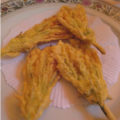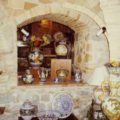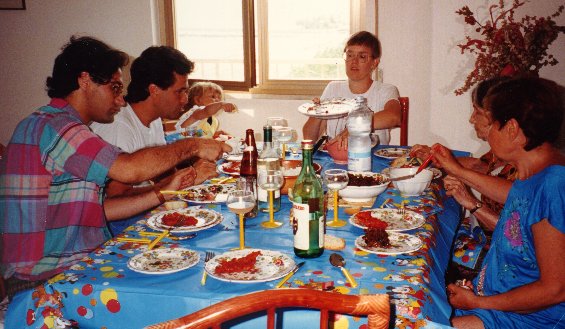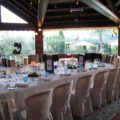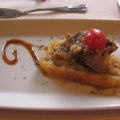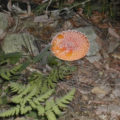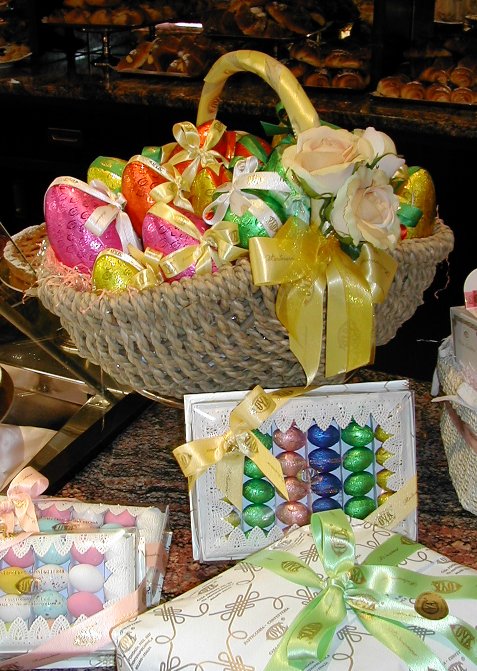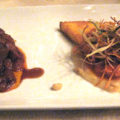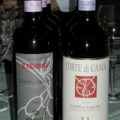I had driven past this place in Lecco many times, but it’s easily overlooked – the outside of the building is unprepossessing unpainted cement, though the large sign with a mysterious painting on it is intriguing, and we heard that it was good.
So we finally went last night. The menu is fixed-price, 30 euros for five courses, drinks extra. The first antipasto was prosciutto and raspadura – scraping – very thin slices of a local hard cheese. The prosciutto was among the best I’ve ever had: sweet and tender, melt-in-your-mouth.
After that, we had to make choices, from 6 or 7 dishes for each course. For our second antipasto, I had a tortina di zucchine in fiore, a mini-pie with cheese, zucchini, and zucchini flowers. Nice, though I would have liked it a little more salty. Enrico had cold, wafer-thin slices of turkey breast with a sauce of raw tomato, celery, and cucumber. He ate all the sauce before I got to taste it, so I can’t speak to that, but the turkey was good.
For primo, Enrico had lasagnette with fagiolini, patate, and pesto – a baked lasagna dish very similar to the Genovese-style pasta with pesto that I make at home with green beans and potatoes, and in this case, bechamel. The lasagna dough was light and airy, making this dish not as heavy as I had expected, and very tasty.
I had home-made ravioli filled with borragine (borage) with a simple dressing of melted butter, sage, and pine nuts. The bitterness of the borage contrasted very nicely with the rich butter.
For secondo, Enrico had cold roast piglet sliced very thin, very similar to porchetta from central Italy, but more tender. I had two kinds of local lake fish, lavarello (sardine-sized, but lighter in flavor) and persico (perch). Both were very lightly battered and fried, leaving plenty of room for the flavor of the fish to come through. As contorno (side dishes), we were both served a small quantity of oven-roasted potatoes.
Then came dessert. Enrico had an exquisite panna cotta (cooked cream) with a dressing of strawberries and other “forest fruits.” I had “Fondente Extra Bitter”, slices of something between a mousse and a torte, made with lots of bitter chocolate, swimming in a creme Anglaise. Wow.
We tried one of the house wines that the owner has made to order, called Aromata Coeli – basically a non-sparkling Barbera which the waitress told us had been aromatizzata (perfumed), though we weren’t clear on what that meant. It was more than palatable, and a good complement to all the variety of our courses.


